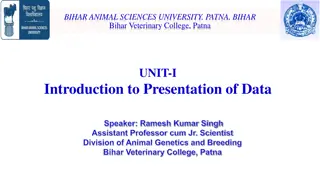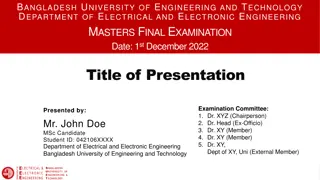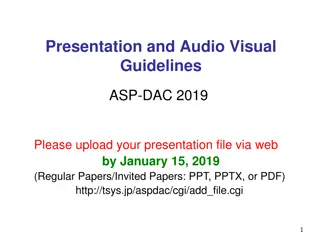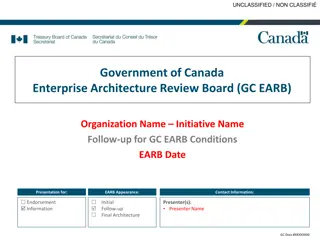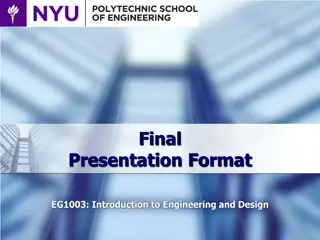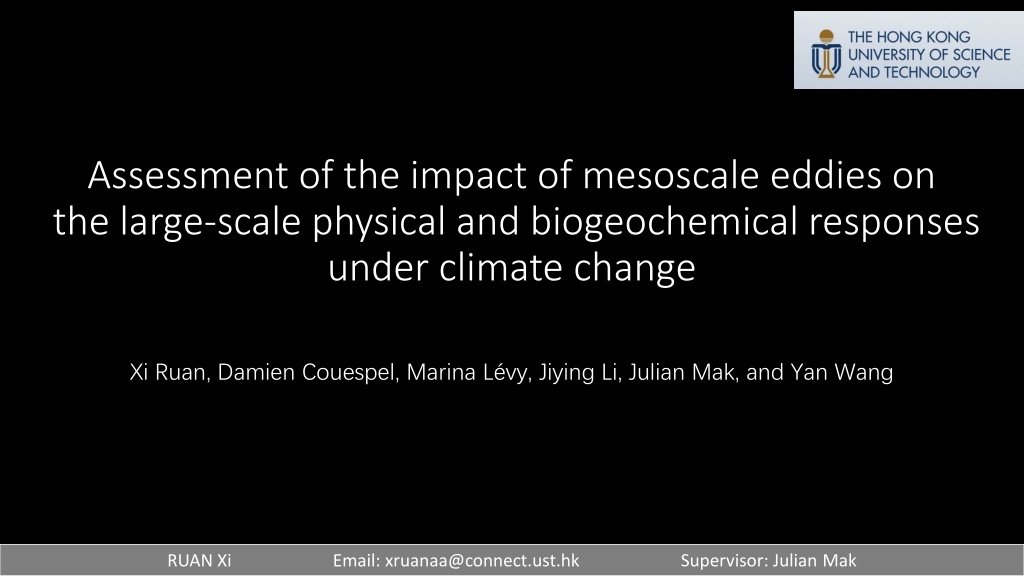
Assessment of Mesoscale Eddies Impact under Climate Change
This study assesses the impact of mesoscale eddies on large-scale physical and biogeochemical responses under climate change. Through a GM-based GEOMETRIC parameterization, the research examines the effects on nutrient streams and net primary productivity. Significant improvements in physical responses are observed with the GEOMETRIC parameterization, indicating enhanced biophysical responses. The study discusses the influence of eddy permitting models and explores potential computational strategies. Overall, the findings provide valuable insights into the complex interactions of mesoscale eddies in a changing climate scenario.
Download Presentation

Please find below an Image/Link to download the presentation.
The content on the website is provided AS IS for your information and personal use only. It may not be sold, licensed, or shared on other websites without obtaining consent from the author. If you encounter any issues during the download, it is possible that the publisher has removed the file from their server.
You are allowed to download the files provided on this website for personal or commercial use, subject to the condition that they are used lawfully. All files are the property of their respective owners.
The content on the website is provided AS IS for your information and personal use only. It may not be sold, licensed, or shared on other websites without obtaining consent from the author.
E N D
Presentation Transcript
Assessment of the impact of mesoscale eddies on the large-scale physical and biogeochemical responses under climate change Xi Ruan, Damien Couespel, Marina L vy, Jiying Li, Julian Mak, and Yan Wang RUAN Xi Email: xruanaa@connect.ust.hk Supervisor: Julian Mak
Mesoscale eddies (10-100km) Baroclinic instability Release potential energy Flatten isopycnals Large-scale impact (nutrient stream, NPP) Model resolution near 1 (100km) Eddy induced velocity (GM scheme) ? = (????) (Gent, & McWilliams, 1990) ? = ?2/?2 isopycnal slope ?2 horizonal buoyancy gradient ?2 buoyancy frequency (Williams, & Follows, 2011) R1, R4 simulations
Parameterisation GM-based GEOMETRIC parameterisation: ??? (?2/?)?? Standard GM parameterisation: ???= ?0= ???????? (Gent, & McWilliams, 1990) ???= ? E total eddy energy ?4 ?2?? ? (? ?0)?? + ?? ? ? ?? ? ?? + ? ( ?? ? ??) ? ?? = ??? 2 ? ?? diffusion advection source dissipation (e.g., Marshall et al., 2012) R12 (1/12 ), CONST (1 ) vs. GEOM (1 ) ???= 1000?2? 1???=???(?,?,?) (Couespel et al., 2021)
z Biogeochemical responses y x R12 CONST GEOM NPP(???? ? ? 2 ??? 1) 3.67 2.76 2.91 NPP sensitivity -13.8% -22.9% -23.6% ? NEMO (v4.0.5) + LOBSTER (L vy et al., 2012) (no physiological change) Subpolar gyre region Does the GEOMETRIC parameterisation do improve the physical responses?
Physical responses R12 CONST GEOM CTL -- 2.29 1.99 ????(??) (?2 mismatch rel. R12) CC -- 1.87 1.63 CTL (median) 592 378 486 MLD (?) CC (median) 388 234 296 1-Wasserstein 217 170 216 Physical responses employing GEOMETRIC parameterisation are improved, biophysical response?
z Biophysical response y x Not have the benefit of two wrongs cancelling out as in the CONST
Eddy permitting models (1/4) Increasing computational power Parameterise or not? Under count / double-count the eddies A field splitting approach (Mak et al., in prep.)
z Biogeochemical response y x R12 R4 R4_GEOM R4_split R1_GEOM NPP(???? ? ? 2 ??? 1) 3.67 3.91 2.55 3.62 2.91 NPP sensitivity -13.8% -11.5% -21.2% -12.2% -23.6% R4 is too good compared to the R1_GEOM R4_GEOM damps the explicit eddies and acts like R1_GEOM R4_split is improved over the R4 and R4_GEOM
Summary and outlooks Spatially varying ???(?,?,?) in GEOM affords benefits to the responses Better biogeochemical response in CONST arises from physically inconsistent response Be careful when use a single metric to judge a parameterisation The field splitting approach used in R4_split avoids damping of explicit mesoscale eddies Use in conjunction with the backscatter approach (Bachman, 2019) ? RUAN Xi Email: xruanaa@connect.ust.hk Supervisor: Julian Mak




